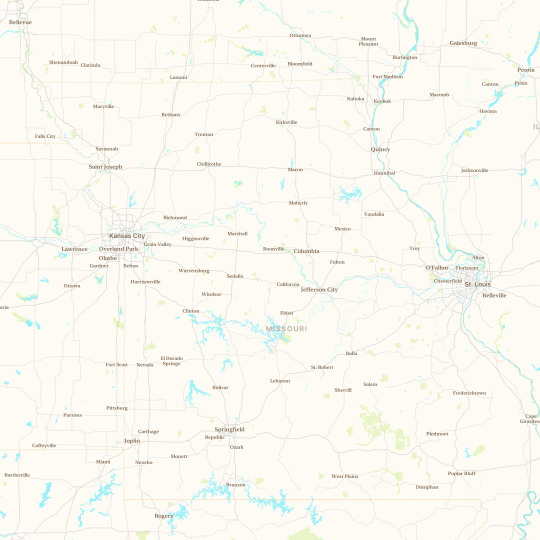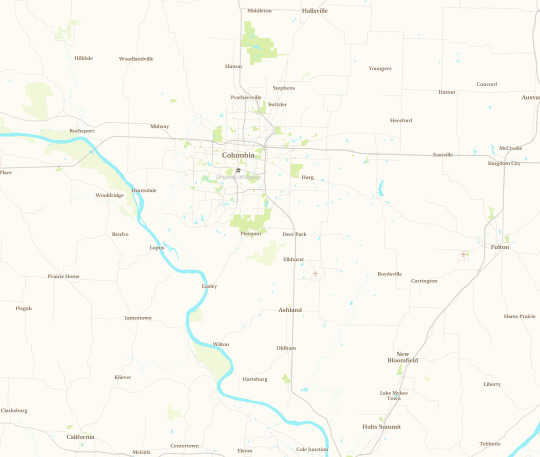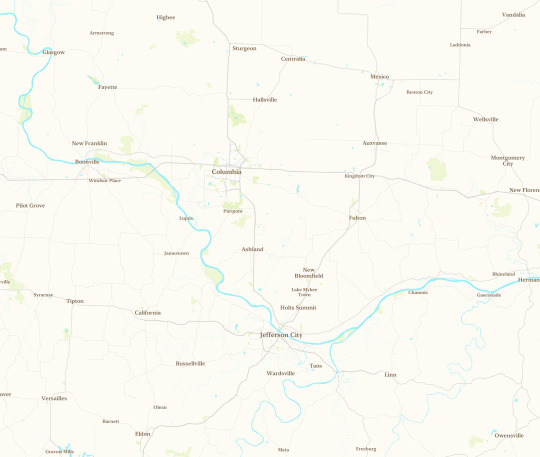#MapBox
Explore tagged Tumblr posts
Text
OpenStreetMapに標高データを組み込む - 標高データの概要とデータについて理解を深める
https://blog.takeho.com/incorporating-elevation-data-into-openstreetmap-get-an-overview-of-elevation-data-and-an-understanding-of-the-data/
OpenStreetMapに標高データを組み込む - 標高データの概要とデータについて理解を深める

OpenStreetMap(以下OSM)は、ユーザー主導で自由に編集・利用できる地図データとして非常に優れています。しかし、登山やハイキング、サイクリングといったアウトドア用途のルート検索では「標高情 […]
0 notes
Link
#AI-definedvehicle#Arm#ArmZenaComputeSubsystemforAutomotive#ArmZenaCSS#Armv9AutomotiveEnhanced#AUTOSAR#Autoware#AWS#Cadence#CARIAD#Continental#COVESA#Denso#eSync#Futurride#GeneralMotors#Github#GreenHills#Mapbox#Mercedes-BenzAG#PanasonicAutomotive#RedHat#Siemens#SOAFEE#sustainablemobility#Synopsys#TataMotors#VirtIO
0 notes
Text
Attention-Worthy Links for December 6th, 2024 Vol 1, Number 27
#fiber#failure#hybrid#EEZ#deep#shallow#sabotage#GenCast#ENS#AI#weather#diffusion#neurons#neurogenesis#verbal#MapLibre#fork#WebGL#Mapbox#JavaScript#TypeScript#cockroach#surgery#implant#Madagascar#control#robotics
0 notes
Text
Geolocalización en HTML5: Navegando por el mundo digital
¿Qué es la geolocalización? La geolocalización es una tecnología que permite determinar la ubicación geográfica de un dispositivo, como un ordenador, un smartphone o una tableta. Gracias a esto, las aplicaciones web pueden ofrecer servicios personalizados basados en la ubicación del usuario, como encontrar negocios cercanos, obtener indicaciones para llegar a un destino o compartir la ubicación…
#API#aplicaciones web#beacons#desarrollo web#dispositivos#geolocalización#Google Maps#GPS#html5#IoT#Javascript#mapas#Mapbox#OpenStreetMap#programación#seguimiento
0 notes
Text
Empowering Communities: MapaKalamidad.ph Enables Real-Time Reporting of Hazards
Scan the QR code to get this post on the go. In times of disasters, staying informed and ensuring the safety of communities becomes paramount. Filipinos now have a powerful tool at their disposal – MapaKalamidad.ph, a multi-hazard platform initiated by the Indonesia-based non-profit organization Yayasan Peta Bencana (Disaster Map Foundation). MapaKalamidad.ph allows individuals and authorities…

View On WordPress
#calamity reporting#Community Safety#Disaster Response#Earthquake Monitoring#Flood Mapping#Hazard Mapping#MapaKalamidad#Mapbox#Mobile Safety App#Realtime Reporting#Typhoon Alert#Yayasan Peta Bencana
0 notes
Text
Deck.gl Bus Routes Visualization

Deck.gl 3D map, bus routes data visualization demo.
Check it out:
https://thewebdesignerpro.com/visualization/busroutes/
1 note
·
View note
Text
The making of the SF family swim map!
This is a technical blog post showcasing a project (swim.joyfulparentingsf.com) made by Double Union members! Written by Ruth Grace Wong.
Emeline (a good friend and fellow DU member) and I love swimming with our kids. The kids love it too, and they always eat really well after swimming! But for a long time we were frustrated about SF Rec & Park's swim schedules. Say today is Wednesday and you want to swim, you have to click on each pool's website and download their PDF schedule to check where and when family swim is available, and the schedules change every few months.
Emeline painstakingly downloaded all the PDFs and manually collated the schedules onto our Joyful Parenting SF blog. The way Rec and Parks structure their schedule assumes that swimmers go to their closest pool, and only need the hours for that particular pool. But we found that this was different from how many families, especially families with young children, research swim times. Often, they have a time where they can go swimming, and they are willing to go to different swimming pools. Often, they’re searching for a place to swim at the last minute. Schedules hence need to allow families to search which pools are open at what time for family swimming. Initially, we extracted family swim times manually from each pool’s pdf schedule and listed them in a blog post. It wasn't particularly user friendly, so she made an interactive map using Felt, where you could select the time period (e.g. Saturday Afternoon) and see which pool offered family swim around that time.
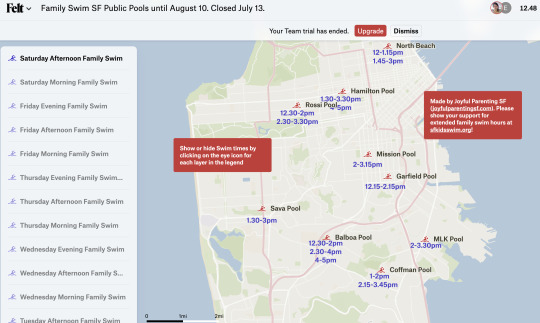
But the schedules change every couple of months, and it got to be too much to be manually updating the map or the blog post. Still, we wanted some way to be able to easily see when and where we could swim with the kids.
Just as we were burning out on manually updating the list, SF Rec & Park released a new Activity Search API, where you can query scheduled activities once their staff have manually entered them into the system. I wrote a Python script to pull Family Swim, and quickly realized that I had to also account for Parent and Child swim (family swim where the parents must be in the water with the kids), and other versions of this such as "Parent / Child Swim". Additionally, the data was not consistent – sometimes the scheduled activities were stored as sub activities, and I had to query the sub activity IDs to find the scheduled times. Finally, some pools (Balboa and Hamilton) have what we call "secret swim", where if the pool is split into a big and small pool, and there is Lap Swim scheduled with nothing else at the same time, the small pool can be used for family swim. So I also pulled all of the lap swim entries for these pools and all other scheduled activities at the pool so I could cross reference and see when secret family swim was available.
We've also seen occasional issues where there is a swim scheduled in the Activity Search, but it's a data entry error and the scheduled swim is not actually available, or there's a Parent Child Swim scheduled during a lap swim (but not all of the lap swims so I can't automatically detect it!) that hasn't been entered into the Activity Search at all. Our friends at SF Kids Swim have been working with SF Rec & Park to advocate for the release of the API, help correct data errors, and ask if there is any opportunity for process improvement.
At the end of the summer, Felt raised their non profit rate from $100 a year to $250 a year. We needed to pay in order to use their API to automatically update the map, but we weren't able to raise enough money to cover the higher rate. Luckily, my husband Robin is a full stack engineer specializing in complex frontends such as maps, and he looked for an open source WebGL map library. MapBox is one very popular option, but he ended up going with MapLibre GL because it had a better open source license. He wrote it in Typescript transpiled with Vite, allowing all the map processing work to happen client-side. All I needed to do was output GeoJSON with my Python script.
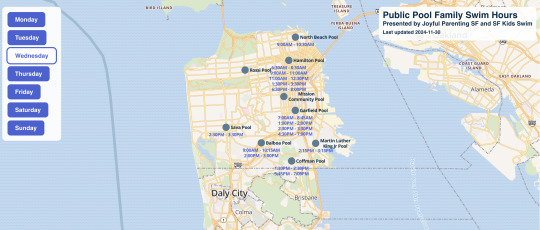
Originally I had been running my script in Replit, but I ended up deciding to switch to Digital Ocean because I wasn't sure how reliably Replit would be able to automatically update the map on a schedule, and I didn't know how stable their pricing would be. My regular server is still running Ubuntu 16, and instead of upgrading it (or trying to get a newer version of Python working on an old server or – god forbid – not using the amazing new Python f strings feature), I decided to spin up a new server on Almalinux 9, which doesn't require as frequent upgrades. I modified my code to automatically push updates into version control and recompile the map when schedule changes were detected, ran it in a daily cron job, and we announced our new map on our blog.
Soon we got a request for it to automatically select the current day of the week, and Robin was able to do it in a jiffy. If you're using it and find an opportunity for improvement, please find me on Twitter at ruthgracewong.
As a working mom, progress on this project was stretched out over nearly half a year. I'm grateful to be able to collaborate with the ever ineffable Emeline, as well as for support from family, friends, and SF Kids Swim. It's super exciting that the swim map is finally out in the world! You can find it at swim.joyfulparentingsf.com.
6 notes
·
View notes
Text





Episode Descriptions:
Beyond the Sea: A death row inmate named Luther Lee Boggs claims that he is psychic and can lead Mulder to a serial killer in exchange for a lesser sentence of life in prison. The agents' roles are reversed in this episode, with Mulder doubting Boggs's claim and Scully believing him after she is told that she can communicate through him with her recently deceased father.
Fresh Bones: One morning, after two gruesome hallucinations, Private Jack McAlpin crashes his car into a tree that has a voodoo symbol drawn on it; the second death of a marine in two weeks that has featured that symbol. The marines in question were guarding a processing center for Haitian refugees, and when Mulder and Scully visit the center they find the deaths were not as unexpected as they seemed.
Musings of a Cigarette Smoking Man: Mulder, Scully and Byers meet with Frohike, where he details what may have been Cigarette Smoking Man's real life.
Field Trip: The skeletonized remains of a young couple are found in the fields of North Carolina. When Mulder and Scully go to investigate, they find that a giant fungal life form releases an LSD-like drug into the air with spores, and then slowly digests its victims. Mulder and Scully fall into its trap and are not sure of what is reality and what is fantasy.
Brand X: While protecting a man due to testify against the Morley cigarette company, Skinner is horrified when the witness dies mysteriously. What the agents soon discover is that a new brand of cigarette has a dangerous secret.
The information from this poll is collected from Katy DeCorah's mapbox of Jane Robert's "Mapping the X-Files"
Episode Descriptions are taken from wikipedia for neutrality.
#the x files#the x-files#txf#polls#north carolina#beyond the sea#fresh bones#musings of a cigarette smoking man#field trip#brand x#s1 e13#s2 e15#s4 e7#s6 e21#s7 e18#setting polls
4 notes
·
View notes
Text
Why Manasa Defence Academy (Vizag) is a Top Choice in AP
Veteran-led Faculty Operated by a retired Indian Navy officer with trainers from the Army and Navy, offering deep insights into NDA prep reddit.com+15manasadefenceacademy.in+15manasadefenceacademy.in+15wutsi.com+4manasadefenceacademy.in+4reddit.com+4.
Comprehensive Training Includes written exam prep (Maths, GAT, English), full physical training (running, gym, swimming), and SSB interview coaching with mock interviews and leadership sessions reddit.com+6manasadefenceacademy.in+6wutsi.com+6.
Exceptional Infrastructure Smart classrooms, library, obstacle course, gym, swimming pool, and student hostels with veg/non-veg mess options manasadefenceacademy.in.
Proven Track Record Touted as the No.1 NDA coaching center in Vizag and Andhra Pradesh, it has one of the highest selection rates, with frequent toppers and success stories en.wikipedia.org+15manasadefenceacademy.in+15wutsi.com+15.
Affordable & Transparent Fees Offers all-inclusive fee structure covering coaching, stay, food, and extras—no hidden costs. Scholarships are available for meritorious or needy students en.wikipedia.org+15wutsi.com+15manasadefenceacademy.in+15tumblr.com.
📍 Location & Practical Details
Manasa Defence Academy New Gajuwaka Depot, Visakhapatnam, Andhra Pradesh – 530012 Phone: 77997 99221 / 77997 99229 Email: [email protected] manasadefenceacademy.in+7manasadefenceacademy.in+7wutsi.com+7
Often mentioned as the No.1 NDA coaching centre in Vizag, ideal for students near Visakhapatnam and across Andhra Pradesh en.wikipedia.org+15manasadefenceacademy.in+15manasadefenceacademy.in+15.
📌 Top 5 NDA Coaching Centres in Visakhapatnam
Here’s a quick overview of the tops in Vizag, with Manasa Defence Academy in the lead:
Manasa Defence Academy – Retired defence faculty, rigorous academic + physical training, smart classrooms, high NDA selection rate articlecede.com+11manasadefenceacademy.in+11manasadefenceacademy.in+11wutsi.com+3manasadefenceacademy.in+3manasadefenceacademy.in+3.
Falcon Education Academy – Known for interactive teaching and peer learning manasadefenceacademy.in. 3–5. Other credible local options—worth visiting personally to compare teaching style, infrastructure, and environment.
🗺️ See It on the Map
1
ListMap
© Mapbox© OpenStreetMap
1

Manasa Defence Academy | Best defence academy in India| NDA, Navy, Army, Airforce in Vizag
Open now until 6:00 PM
·
4.2(501 reviews)
Veteran‑led NDA coaching with full academic + physical + SSB prep manasadefenceacademy.in
DirectionsWebsiteCall
✅ Tips for Choosing the Right NDA Coaching Centre
Visit and interact: Speak with faculty, current students, and tour the facilities.
Attend a demo or trial class: Assess teaching methods and feel the environment.
Check success data: Ask how many students cleared NDA exams in recent years.
Compare fee structure: Ensure transparency and inquire about scholarships or discounts.
Consider location: Ease of travel can reduce stress and improve consistency.
✅ Final Take
Manasa Defence Academy in Vizag ticks nearly every box for NDA aspirants—veteran guidance, comprehensive training, excellent facilities, strong success rates, and transparent pricing. It’s one of the top choices in Andhra Pradesh. However, exploring a couple of nearby academies (like Falcon Education Academy) can help you find the best personal fit.
Would you like help contacting them, comparing their programs, or finding demo dates?
0 notes
Text
Ambulance App Development
Imagine being stuck in traffic with a loved one in need of urgent medical attention. You dial emergency services, but help is delayed. Unfortunately, that scenario is far too common in many parts of the world. Now picture this: with just a few taps on your phone, an ambulance is on its way, with real-time tracking and updates. That’s the magic of Ambulance App Development.
In recent years, mobile technology has completely reshaped how we access healthcare. Much like ride-hailing apps changed the way we book taxis, on-demand ambulance app development is now doing the same for emergency medical services.
Let’s break it down.
What Is an Ambulance App?
An ambulance app is a digital platform that connects users with the nearest available ambulance in real time. It allows for fast booking, live location tracking, medical data sharing, and even direct coordination with hospitals.
You could think of it as an Uber for Ambulance. Just as ride-hailing services made cabs more accessible and efficient, ambulance apps are revolutionizing how emergency care reaches people.
Why Do We Need Ambulance Apps?
Across the globe, the traditional emergency medical system has struggled with delays, miscommunication, and lack of transparency.
Here’s what ambulance apps bring to the table:
Faster response times
Real-time GPS tracking
Digital patient records sharing
Route optimization for drivers
Cashless payments and digital receipts
These features not only help patients but also make operations smoother for healthcare providers and EMT teams.
Real-World Examples
India's Ziqitza Healthcare has been leading the charge in providing on-demand ambulance services in several states through a user-friendly mobile app. In Kenya, Flare offers an Uber-style service for ambulances, connecting users to a network of emergency responders across the country. The UK’s GoodSAM platform integrates with the NHS and uses crowd-sourced first responders to help patients before the ambulance even arrives.
These examples show that on-demand ambulance app development is not a luxury anymore—it’s a necessity.
Key Features of a Successful Ambulance App
Creating an ambulance app isn't just about throwing in a few features. You need a well-thought-out design that considers the needs of both patients and healthcare providers.
Here’s a quick peek at what makes a solid app tick:
1. Instant Booking
Users can book ambulances with a tap and share their live location instantly.
2. Real-Time Tracking
See exactly where your ambulance is and how long it will take to arrive.
3. Multiple Ambulance Types
Let users choose from basic, advanced, ICU-equipped, or neonatal ambulances.
4. Driver & EMT Profiles
Build trust by displaying driver and EMT details with ratings and certifications.
5. Digital Payments
Simplify transactions with integrated payment gateways and insurance options.
6. Emergency Contacts & Medical Info
Allow users to add medical history and emergency contact numbers in advance.
7. Hospital Integration
Hospitals can prepare for the incoming patient, reducing wait time on arrival.
Technology Stack: What’s Under the Hood?
Just like a high-performance car, an ambulance app needs a powerful engine behind it. Here’s what you’ll typically find:
Frontend: React Native or Flutter for cross-platform functionality
Backend: Node.js, Python, or Java with robust APIs
Database: MongoDB, PostgreSQL, or Firebase
GPS & Navigation: Google Maps, Mapbox, or OpenStreetMap
Payment Gateways: Stripe, Razorpay, or PayPal
Real-Time Features: WebSocket or Firebase for live updates
The key to success? Choosing scalable, secure, and fast technologies that ensure zero lag during critical moments.
Business Models for Ambulance Apps
Thinking of investing in ambulance app development? You’ve got options. Here are some popular business models:
Aggregator Model: Like Uber, connect multiple ambulance providers under one platform.
Hospital-Based Model: An internal app exclusively for a hospital’s emergency fleet.
Subscription-Based: Offer premium memberships with priority response and additional features.
Pay-Per-Use: Users pay a one-time fee per emergency trip.
Each model has its pros and cons. Your choice depends on your market, goals, and target audience.
Challenges to Watch Out For
Let’s be real: this isn’t an easy business. Here are some bumps on the road you’ll need to steer around:
Regulatory compliance with healthcare and transport authorities
Ensuring data security, especially with patient medical records
Maintaining a well-trained and verified network of EMTs and drivers
Managing operations during peak demand or natural disasters
With proper planning and the right tech partner, these challenges can absolutely be managed.
Conclusion
In a world where everything is moving faster, healthcare can’t afford to lag behind. Ambulance app development is more than just a tech trend—it’s a life-saving tool that brings emergency services to the fingertips of millions. From reducing response times to helping hospitals better manage patients, these apps are changing the game.
Whether you're a healthcare provider looking to modernize, an entrepreneur exploring med-tech, or a government agency wanting to improve emergency services, now’s the time to take the leap.
Don’t just follow the trend. Be the reason someone gets help when they need it most.
Building an Uber for Ambulance app can be your way of doing just that.
If you’re ready to dive into on-demand ambulance app development, find a tech partner with real healthcare experience, focus on user needs, and never compromise on reliability. Because when it comes to emergencies, there are no second chances.
0 notes
Text
Tech Stack You Need for Building an On-Demand Food Delivery App
I remember the first time I considered launching a food delivery app—it felt exciting and overwhelming at the same time. I had this vision of a sleek, user-friendly platform that could bring local restaurant food straight to customers' doors, but I wasn’t sure where to begin. The first big question that hit me? What technology stack do I need to build a reliable, scalable food delivery app solution?
If you’re a restaurant owner, small business operator, or part of an enterprise considering the same path, this guide is for you. Let me break it down and share what I’ve learned about choosing the tech stack for an on demand food delivery app development journey.
Why the Right Tech Stack Matters
Before we get into specifics, let’s talk about why choosing the right tech stack is so crucial. Think of your app like a restaurant kitchen—you need the right tools and appliances to make sure the operations run smoothly. In the same way, the technology behind your app ensures fast performance, strong security, and a seamless user experience. If you're serious about investing in a robust food delivery application development plan, your tech choices will make or break the project.
1. Frontend Development (User Interface)
This is what your customers actually see and interact with on their screens. A smooth, intuitive interface is key to winning users over.
Languages: HTML5, CSS3, JavaScript
Frameworks: React Native, Flutter (for cross-platform apps), Swift (for iOS), Kotlin (for Android)
Personally, I love React Native. It lets you build apps for both iOS and Android using a single codebase, which means faster development and lower costs. For a startup or small business, that’s a win.
2. Backend Development (Server-Side Logic)
This is the engine room of your food delivery app development solution. It handles user authentication, order processing, real-time tracking, and so much more.
Languages: Node.js, Python, Ruby, Java
Frameworks: Express.js, Django, Spring Boot
Databases: MongoDB, PostgreSQL, MySQL
APIs: RESTful APIs, GraphQL for communication between the frontend and backend
If you ask any solid food delivery app development company, they'll likely recommend Node.js for its speed and scalability, especially for apps expecting high traffic.
3. Real-Time Features & Geolocation
When I order food, I want to see the delivery route and ETA—that’s made possible through real-time tech and location-based services.
Maps & Geolocation: Google Maps API, Mapbox, HERE
Real-Time Communication: Socket.io, Firebase, Pusher
Real-time tracking is a must in today’s market, and any modern food delivery app development solution must integrate this smoothly.
4. Cloud & Hosting Platforms
You need a secure and scalable place to host your app and store data. Here’s what I found to work well:
Cloud Providers: AWS, Google Cloud, Microsoft Azure
Storage: Amazon S3, Firebase Storage
CDN: Cloudflare, AWS CloudFront
I personally prefer AWS for its broad range of services and reliability, especially when scaling your app as you grow.
5. Payment Gateways
Getting paid should be easy and secure—for both you and your customers.
Popular Gateways: Stripe, Razorpay, PayPal, Square
Local Payment Options: UPI, Paytm, Google Pay (especially in regions like India)
A versatile food delivery application development plan should include multiple payment options to suit different markets.
6. Push Notifications & Messaging
Engagement is everything. I always appreciate updates on my order or a tempting offer notification from my favorite local café.
Services: Firebase Cloud Messaging (FCM), OneSignal, Twilio
These tools help maintain a strong connection with your users and improve retention.
7. Admin Panel & Dashboard
Behind every smooth app is a powerful admin panel where business owners can manage orders, customers, payments, and analytics.
Frontend Frameworks: Angular, Vue.js
Backend Integration: Node.js or Laravel with MySQL/PostgreSQL
This is one part you definitely want your food delivery app development company to customize according to your specific business operations.
8. Security & Authentication
Trust me—when handling sensitive data like payment info or user addresses, security is non-negotiable.
Authentication: OAuth 2.0, JWT (JSON Web Tokens)
Data Encryption: SSL, HTTPS
Compliance: GDPR, PCI-DSS for payment compliance
A dependable on demand food delivery app development process always includes a strong focus on security and privacy from day one.
Final Thoughts
Choosing the right tech stack isn’t just a technical decision—it’s a business one. Whether you’re building your app in-house or partnering with a trusted food delivery app development company, knowing the components involved helps you make smarter choices and ask the right questions.
When I look back at my own journey in food delivery app solution planning, the clarity came once I understood the tools behind the scenes. Now, as the industry continues to grow, investing in the right technology gives your business the best chance to stand out.
So if you’re serious about launching a top-tier app that delivers both food and fantastic user experience, your tech stack is where it all begins. And hey, if you need help, companies like Delivery Bee are doing some really exciting things in this space. I’d definitely recommend exploring their food delivery app development solutions.
0 notes
Text
Mapbox Geospatial MCP Server
https://github.com/mapbox/mcp-server
0 notes
Text
How Data Science Powers Ride-Sharing Apps Like Uber
Booking a ride through apps like Uber or Ola feels effortless. You tap a button, get matched with a nearby driver, track your ride in real time, and pay digitally. But behind this seamless experience is a powerful engine of data science, working 24/7 to optimize every part of your journey.
From estimating arrival times to setting dynamic prices, ride-sharing platforms rely heavily on data to deliver fast, efficient, and safe rides. Let’s take a look at how data science powers this complex ecosystem behind the scenes.
1. Matching Riders and Drivers – In Real Time
The first challenge for any ride-sharing platform is matching passengers with the nearest available drivers. This isn’t just about distance—algorithms consider:
Traffic conditions
Driver acceptance history
Ride cancellation rates
Estimated time to pickup
Driver ratings
Data science models use all this information to ensure the best match. Machine learning continuously refines this process by learning from past trips and user behavior.
2. Route Optimization and Navigation
Once a ride is accepted, the app provides the most efficient route to the driver and rider. Data science helps in:
Predicting traffic congestion
Identifying road closures
Estimating arrival and drop-off times accurately
Ride-sharing companies integrate GPS data, historical traffic trends, and real-time updates to offer smart navigation—sometimes even beating popular map apps in accuracy.
3. Dynamic Pricing with Surge Algorithms
If you’ve ever paid extra during peak hours, you’ve experienced surge pricing. This is one of the most sophisticated use cases of data science in ride-sharing.
Algorithms analyze:
Demand vs. supply in real time
Events (concerts, sports matches, holidays)
Weather conditions
Traffic and accident reports
Based on this, prices adjust dynamically to ensure more drivers are incentivized to operate during busy times, balancing supply and demand efficiently.
4. Predictive Demand Forecasting
Data scientists at companies like Uber use predictive models to forecast where and when ride demand will increase. By analyzing:
Past ride data
Time of day
Day of the week
Local events and weather
They can proactively position drivers in high-demand areas, reducing wait times and improving overall customer satisfaction.
5. Driver Incentive and Retention Models
Driver retention is key to the success of ride-sharing platforms. Data science helps create personalized incentive programs, offering bonuses based on:
Ride frequency
Location coverage
Customer ratings
Peak hour availability
By analyzing individual driver patterns and preferences, companies can customize rewards to keep their best drivers motivated and on the road.
6. Fraud Detection and Safety
Security and trust are critical. Machine learning models continuously monitor rides for signs of fraud or unsafe behavior. These include:
Unexpected route deviations
Rapid cancellation patterns
Payment fraud indicators
Fake GPS spoofing
AI-powered systems flag suspicious activity instantly, protecting both riders and drivers.
7. Customer Experience and Feedback Loops
After every ride, passengers and drivers rate each other. These ratings feed into reputation systems built with data science. Natural language processing (NLP) is used to analyze written reviews, identify trends, and prioritize customer support.
Feedback loops help improve:
Driver behavior through coaching or deactivation
App features and interface
Wait time reduction strategies
Real-World Tools Behind the Scenes
Companies like Uber use a combination of technologies:
Big Data Tools: Hadoop, Spark
Machine Learning Libraries: TensorFlow, XGBoost
Geospatial Analysis: GIS, OpenStreetMap, Mapbox
Cloud Platforms: AWS, Google Cloud
These tools process millions of data points per minute to keep the system running smoothly.
Conclusion:
Ride-sharing apps may look simple on the surface, but they’re powered by an intricate web of algorithms, data pipelines, and real-time analytics. Data science is the backbone of this digital transportation revolution—making rides faster, safer, and smarter.
Every time you book a ride, you’re not just traveling—you’re experiencing the power of data science in motion.

#datascience#ridesharing#uber#aiintransportation#machinelearning#bigdata#realtimetechnology#transportationtech#appdevelopment#smartmobility#nschool academy#analytics
0 notes
Text
How to Build a Carpooling App Like Liftshare?
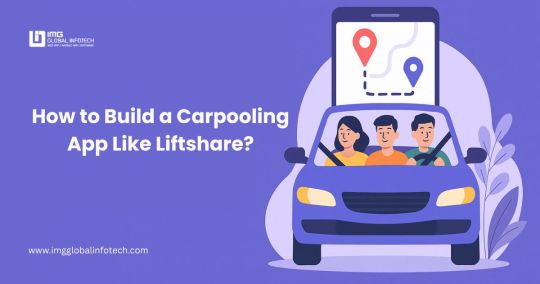
In today’s fast-paced world, urban congestion, high fuel costs, and environmental concerns have paved the way for sustainable commuting alternatives, one of which is carpooling. Apps like Liftshare have successfully tapped into this demand, enabling people to share rides, reduce costs, and minimize their carbon footprint. If you're looking to build a carpooling app like Liftshare, this guide will walk you through everything from concept to launch.
Why Build a Carpooling App?
The global ride-sharing market is projected to reach $226.45 billion by 2030, driven by increasing smartphone penetration and demand for eco-friendly transport solutions. A carpooling app offers a win-win for users and the environment—helping reduce traffic, lower fuel expenses, and cut down emissions.
Key Features of a Liftshare-Like Carpooling App
To compete in this space, your app must offer intuitive functionality, seamless navigation, and secure transactions. Here are the must-have features:
1. User Registration & Profiles
Allow users to sign up via email, phone, or social accounts and create detailed profiles including preferences, car details (for drivers), and reviews.
2. Ride Listings & Search
Drivers should be able to post available rides with pickup/drop locations, time, and price. Riders can search and filter based on location, time, and ratings.
3. Real-Time GPS & Route Mapping
Integrate mapping APIs (like Google Maps) for real-time route suggestions, trip tracking, and optimized ride matching.
4. In-App Messaging
Enable secure in-app communication between drivers and passengers to discuss trip details without exchanging contact info.
5. Booking & Payment Integration
Include easy ride booking, fare calculation, and secure payment gateways like Stripe, Razorpay, or PayPal.
6. Rating & Review System
Let users rate each other post-trip to build trust and community reliability.
7. Admin Dashboard
Manage users, monitor activities, set policies, and access analytics to ensure smooth operations and user satisfaction.
Technology Stack Recommendations
Frontend: React Native or Flutter (for cross-platform apps)
Backend: Node.js or Django with PostgreSQL or MongoDB
Maps & Location: Google Maps API, Mapbox
Payments: Stripe, PayPal, Razorpay
Authentication: Firebase Auth or OAuth 2.0
Step-by-Step Development Process
Step 1: Market Research & Planning
Analyze competitors like Liftshare, BlaBlaCar, and Via. Understand your audience and define USPs.
Step 2: Create Wireframes & UI/UX Design
Design user-friendly, minimal, and mobile-responsive interfaces to enhance engagement.
Step 3: Develop the MVP
Build a Minimum Viable Product with essential features to validate the concept and gather user feedback.
Step 4: Launch & Promote
Deploy the app on app stores and use SEO, social media marketing, and referral campaigns to drive downloads.
Step 5: Gather Feedback & Scale
Continuously monitor user feedback, fix bugs, and introduce advanced features like ride subscriptions, multi-route matching, or carbon footprint calculators.
Cost to Develop a Carpooling App
The cost to build a taxi app like Liftshare can range from $15,000 to $50,000+, depending on complexity, feature set, location of your development team, and tech stack used.
Final Words
Building a carpooling app like Liftshare requires more than just coding, it needs a user-first mindset, eco-conscious vision, and strong technical execution. If done right, your app can not only solve daily commuting issues but also contribute to a greener, more connected world. Contact a leading taxi app development company to build a ridesharing app for your business.
0 notes
Text
How APIs Power Modern Websites – A Think To Share IT Solutions Insight
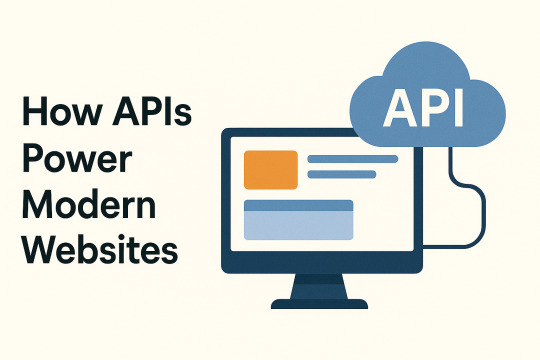
Modern websites are no longer static brochures. They’re dynamic, data-driven platforms that interact with various services in real time. At the core of this interactivity lies a powerful and essential component: the API, or Application Programming Interface.
At Think To Share IT Solutions, we engineer websites that aren’t just visually compelling—they’re functionally superior, thanks to smart API integrations that enable real-time performance, seamless communication, and scalable features.
What is an API?
An API (Application Programming Interface) is a set of protocols and tools that allow software applications to communicate with each other. In web development, APIs act as bridges that connect your website to external or internal systems.
Instead of building every function from scratch, APIs allow developers to integrate existing, trusted services—making websites faster, more reliable, and more scalable.
How APIs Power Modern Websites
1. Dynamic Content Delivery
APIs allow websites to fetch and display real-time content from a database or CMS without refreshing the page. This improves performance and user experience.
Example: A blog or news portal pulling updated articles from a headless CMS like Strapi or WordPress via REST API.
2. User Authentication and Access Control
APIs handle secure user logins and permission-based access. Authentication services like Google OAuth or Auth0 rely entirely on API interactions.
Example: "Sign in with Google" uses an external API to verify the user's identity securely without storing sensitive data on your own servers.
3. Third-Party Service Integrations
APIs enable seamless integration with third-party platforms for added functionality.
Function
API Providers
Payments
Stripe, Razorpay, PayPal
Email Marketing
Mailchimp, SendGrid
Analytics
Google Analytics, Matomo
Customer Support
Zendesk, Intercom
Maps & Location
Google Maps API, Mapbox
These integrations enhance user experience without compromising performance or security.
4. Real-Time Features and Updates
Websites that support live chat, order tracking, or instant notifications use APIs to communicate with real-time databases.
Example: Firebase and Pusher APIs power real-time chat interfaces or live delivery status updates.
5. E-Commerce Functionality
Modern eCommerce websites rely on APIs to handle inventory updates, pricing changes, order processing, and shipping logistics.
What We Implement:
Cart management via REST or GraphQL APIs
Real-time pricing and availability updates
Shipment tracking using courier APIs (e.g., Delhivery, Shiprocket)
6. Headless Architecture
In a headless setup, APIs serve as the communication layer between the front-end and the back-end. This decoupling improves performance and allows for more flexible design and delivery across platforms.
Example: Using Next.js (for the front-end) and Strapi or Sanity (as the headless CMS), data is fetched via API endpoints and rendered statically or server-side for speed and SEO.
Benefits of API-Driven Web Development
Benefit
Explanation
Faster Deployment
Plug in pre-built services instead of coding everything from scratch
Scalability
Easily add new features or services without overhauling your system
Enhanced Security
Offload sensitive functions like payments to trusted platforms
Maintainability
Isolated services reduce complexity and ease troubleshooting
Cross-Platform
Share the same API with mobile apps, web apps, and IoT devices
How Think To Share Implements API-Driven Architecture
Our development process incorporates API planning from the very beginning:
Architecture Planning: Identify necessary APIs based on business goals
Security: Implement OAuth2, JWT tokens, and rate limiting for secure access
Performance: Use caching mechanisms (Redis, CDN) to reduce API load
Monitoring: Set up logging, error tracking, and fallback handling for resilience
Documentation: Provide detailed API docs using tools like Swagger or Postman
Final Thoughts: APIs Are the Backbone of Modern Websites
APIs have evolved from technical add-ons to mission-critical infrastructure for digital platforms. Whether you're running a website, mobile app, or enterprise software, APIs allow you to build faster, scale smarter, and connect deeper with users.
At Think To Share IT Solutions, we design and develop high-performance web systems that are modular, connected, and built for long-term growth—powered by reliable, secure, and well-integrated APIs.
0 notes
